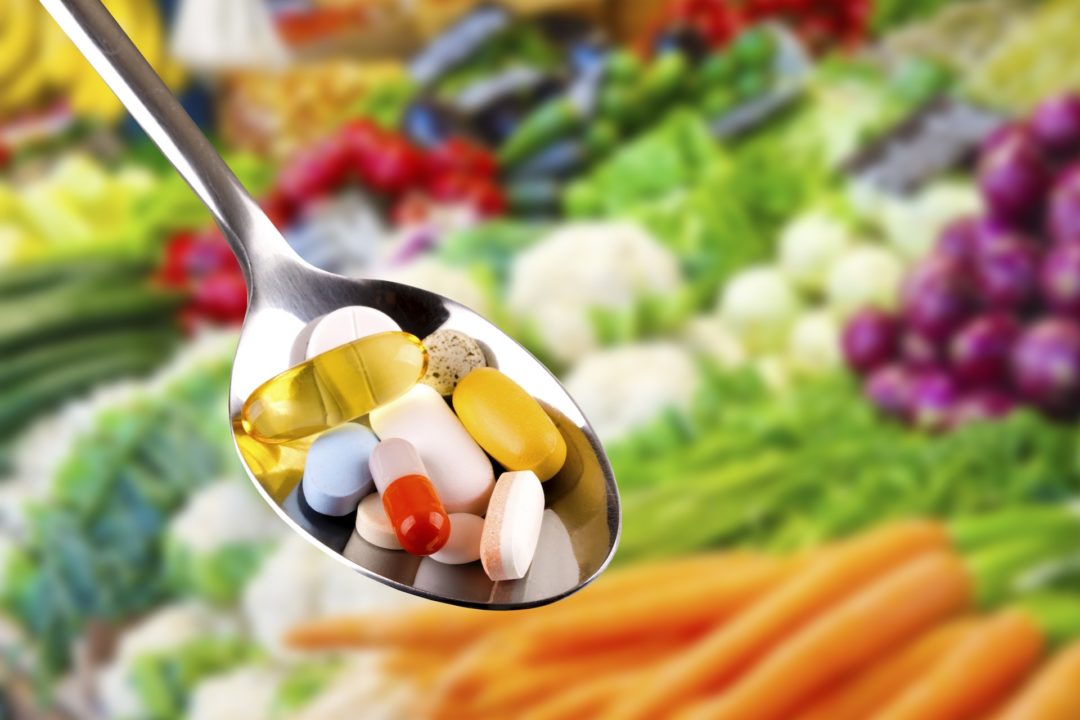And here's the rest of my personal daily regimen. Remember, you don’t need follow exactly what I do. Everyone is different and everyone’s supplement needs are different as well. But—for better or worse—this is the program I’ve come up for myself, and it seems to be working well for me. Use what you can, discard the rest, and tweak as often as you need to!
6)Resveratrol:
Resveratrol is a polyphenol, a plant compound found primarily in the skin of dark grapes and in the red wine that’s made from them. It’s considered an “anti-aging” nutrient because it was found to turn on the same longevity genes (called the SIRT genes) that are turned on by calorie restriction. Calorie restriction has been found—in every species studied—to extend life. But as you can imagine, it’s an unpopular strategy for humans—hence the excitement about resveratrol. (David Sinclair, the Harvard scientist who discovered resveratrol, eventually sold his company for 750 million dollars.)
Since its discovery, resveratrol has been researched for quite a number of conditions, generally with very positive or promising results. It’s been shown to affect multiple molecular “targets” in the body which are associated with cardioprotective effects (1). It protects the brain and may help slow down age-related cognitive decline (2). It increases insulin sensitivity (3). Should I go on?
I take 500 mg a day of resveratrol. Note: the active ingredient in resveratrol is trans resveratrol, and that’s what you want to be taking. Two companies that use 100% trans resveratrol in their products are Reserveage and Life Extension. Both are great.
- https://www.nature.com/articles/s41698-017-0038-6
- https://www.ncbi.nlm.nih.gov/pmc/articles/PMC4030174/
7) Curcumin:
Curcumin is the name given to a class of compounds known as curcuminoids, which are found in the spice turmeric, known for giving curries their yellow coloring. It’s also one of the most powerful plant compounds on Planet Earth, affecting many metabolic targets and having notable anti-inflammatory activity. Its great for the liver, and it’s being researched for its anti-cancer effects (1,2).
The problem is that curcumin isn’t well absorbed and even people who eat a lot of turmeric don’t get as much as you might expect. Take a supplement. BCM-95 and C-3 are two forms of curcumin that are better absorbed than plain old curcumin, so get a product that offers one of those. I personally take Terry Naturally’s CuraMed, which uses BCM-95.
- https://www.mayoclinic.org/diseases-conditions/cancer/expert-answers/curcumin/faq-20057858
- https://www.ncbi.nlm.nih.gov/pmc/articles/PMC2572158/
8)Probiotics:
The conventional medical argument against probiotic supplementation is that “we just don’t know enough to recommend.” That argument is partially right. As the science of personalized medicine continues to grow, it’s clear to most health professionals that the day will soon be here when we’ll be able to access and analyze genetics and microbiome data so easily that we’ll be able to recommend particular strains of probiotics for specific conditions and specific people,
That day isn’t here yet. But I’m taking probiotics anyway. One of my personal friends and mentors, Dr. David Perlmutter—an internationally recognized expert on the gut and the brain—has an article online listing what he thinks are the five most important probiotic strains to consume (1). They areLactobaccilus plantarum, Lactobaccilus acidophilus, Lactocaccilus brevis, Bifidobacterium lactis, and Bifidobacterium longum.I’d suggest finding one that has all five. The brand I use is Innate Response.
1)https://www.drperlmutter.com/learn/resources/probiotics-five-core-species/
9) Extra-Virgin Olive Oil:
People are always surprised when I say I take olive oil daily as a supplement but I do, and here’s why. I am convinced that real, authentic extra-virgin olive oil is one of the healthiest foods on the planet, and that the polyphenol content of a really good olive oil together with the (anti-inflammatory) monounsaturated fat it comes with is significant enough to qualify as a nutritional supplement.
There are a lot of fake EVOOs around, as documented in the book Fake Food. The brand I like best is Cobram Estate, which is not only the real deal (authentic extra virgin), but embarrassingly cheap and available everywhere, even Walmart! (An executive at Cobram confided to me that they plan to come out with a super-concentrated version of their oil in pill form as a supplement. I understand why. But the taste of this oil is so rich, grassy and delicious right out of the bottle, that I think I’ll just stick to swigging it.)
10)Sunfiber™:
One of the few dietary components about which there has never, ever been any controversy is fiber. One of the reasons all those diet studies showing that people who eat more fruits and vegetables and beans have better health is because fruits, vegetables and beans are great sources of fiber.
Fiber (especially soluble or prebiotic fiber) provides food to the “good guys” among the trillions of bugs that live in your gut and that scientists refer to as "the microbiome." The health of the microbiome (and of the gut in general) is now thought to be central to virtually every aspect of health.
No one gets enough fiber. The Institute of Medicine recommends between 25-38 grams, our Paleoilithic ancestors got around 50 grams and the average American consumes a measly 15. Sunfiber is an odorless, tasteless supplement that provides about 6 grams of mostly soluble fiber per scoop and can be thrown into anything from coffee to smoothies without causing bloating or gas. Sunfiber™ is also used as an ingredient in many other supplements—you’ll often see it listed on the ingredients label.
11)CBD:
I’m a huge fan of CBD. I believe the research is incredibly promising and positive, I’ve listened to hundreds of anecdotal reports of good results on a number of dimensions (including social anxiety and pain reduction) and I’ve experienced those results for myself.
In my case the results I’m talking about involve a significant enough reduction in joint pain for me to play tennis four times a week despite having been diagnosed withsevere arthritis in my right shoulder. I don’t think it’sjustthe CBD—I also do physical therapy, and am on a super-anti-inflammatory regimen that includes curcumin, glucosamine/ chondrotrin (I use Thorne Labs), lots of fish oil, quercetin (I use Jarrow), omega-7 (Joint Reliefby Barleans) and a really good formula calledJoint Essence(by Pure Essence Labs)—but there’s no doubt in my mind that the CBD has made a significant difference.
My brand here is Barlean’s. They’re famous for their oil extraction so they know how to do it properly, and they have assays showing that every batch of CBD has the amount of CBD claimed on the label. There are other really good companies making CBD—Charlotte’s Web, Emerald Health and CV Sciences come to mind—but Barlean’s has been around the longest and has an impeccable reputation. They make an organic version and an extra-strength version—I like both but am on the extra-strength one, twice a day at double dose.
12)Trace Minerals:
Micronutrients are substances needed in trace amounts in order for the human body to function optimally. They include vitamins, amino acids, essential fatty acids and minerals. But—in my opinion—minerals are the class of micronutrients that get the least attention. They’re essential for a host of operations, they’re needed (sometimes) in tiny amounts, and many are missing from our soiland our diet. (I mean, really, what’s the last time you ever took a manganese supplement?)
And since minerals are needed in the right amounts in order for electrical charges to be carried in the body, sub-optimal mineral levels can affect a host of symptoms and conditions you might never have associated with mineral deficiencies. A complete trace mineral supplement is going to contain many important minerals that most consumers have never even heard of much less thought about. (Examples: nitrogen, silicon, molybdenum, strontium, vanadium, and many others). I useConcenTrace Trace Mineral Dropsby Trace Mineral Research. It tastes terrible but the secret is to dilute it—put a dose in a 6 ounce glass and you’ll barely notice it’s there. But the results are worth it.
And… to make it an even Baker’s dozen… number 13:
13)TruNiagen™:
About a decade ago, a biochemist named Charles Brenner (now a professor of biochemistry at University of Iowa) discovered a previous unknown form of vitamin B3 called nicotinamide riboside. The interesting thing about nicotinamide riboside is that it has the unique property of turbo charging the body’s production of an ever-diminishing resource known as NAD, which is needed for virtually every cellular operation. We make less NAD as we grow older which is believed to be one of the many causes of aging, since the cell has less capacity to produce what it essentially runs on. And oral NAD supplements have turned out to be disappointing.
That’s why everyone—including me—is so excited about nicotinamide riboside, also known asniagen. It’s been touted as the fountain of youth precisely because of its connection to NAD. A company called Chromadex owns the patent on nictinamide riboside, which they market under their own label as TruNiagen. Chromadex licenses nicotinamide riboside (niagen) to select manufacturers—who use it in their own NAD-promoting formulas—so you can choose any brand you like that contains it.
And there you have my personal supplement regimen, at least as of 2019.
Take what you can use and discard (or replace) the rest. And remember, you are unique. Your needs—in everything including vitamins, diet, exercise, relationships or number of dogs needed to complete a household—are likely to be different from mine.
Which is exactly how it should be! (There’s areasonfor the wonderful French saying, “viva la difference!”)
Enjoy the journey.
Note: The views and opinions expressed here are those of the author(s) and contributor(s) and do not necessarily reflect those of the publisher and editors of WholeFoods Magazine.










